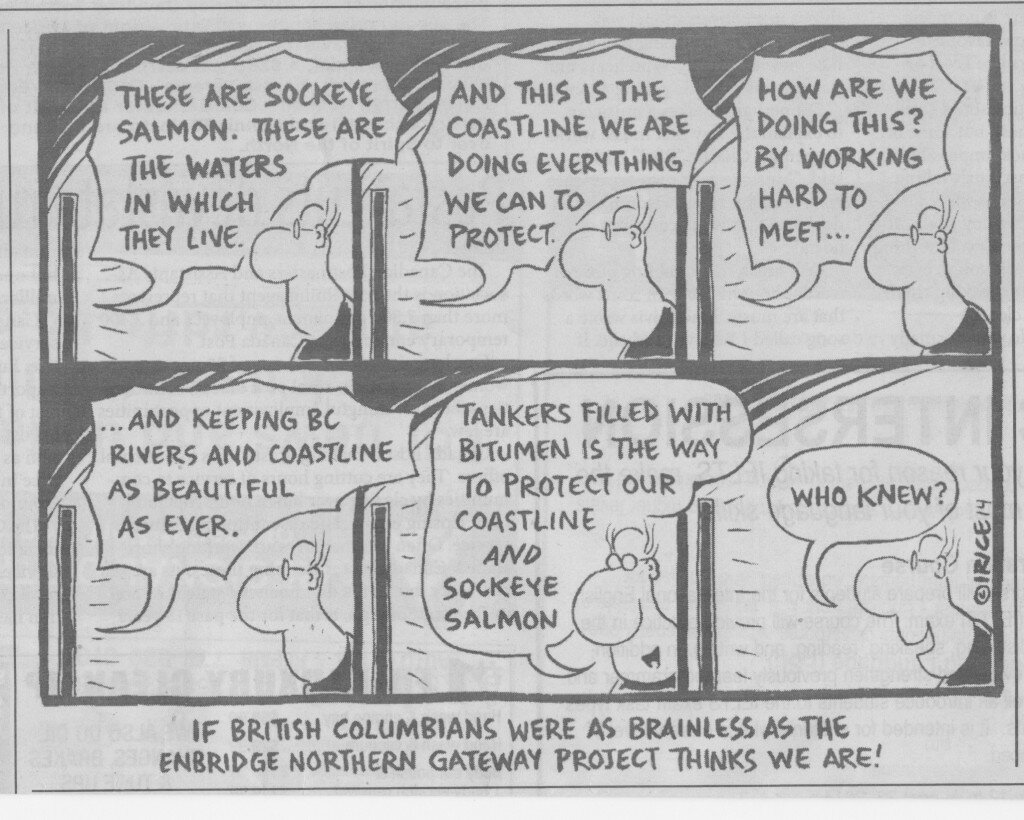
cost of Justice Cohen’s recommendations? (# Recommendations from Volume 3 report)
In reading through Justice Cohen’s 1000+ pages reports, there is quite a bit of positive recommendations, ‘conclusions’, etc. — however there are some glaring contradictions, and sad disappointments.
Justice Cohen explains his weight given to evidence in : The Uncertain Future of Fraser Sockeye – Causes of the Decline:
Assessment of the evidence
In the field of law, lawyers and judges ask whether the evidence led at a trial “proves” the case. In a civil trial, the plaintiff must prove his or her case on the balance of probabilities – that is, the judge or jury must be satisfied that the plaintiff’s version of events is more likely than not true. In a criminal case, the prosecution must prove the accused’s guilt to a much higher standard – beyond a reasonable doubt.
In this Inquiry, I have not conducted a trial, and in relation to making findings of fact regarding the causes of the decline, it would not be appropriate in my view to apply either the civil or the criminal standard of proof set out above. Rather, I use terms that express likelihood or degrees of certainty to describe the strength or weakness of the evidence, as did many of the authors of technical reports and other witnesses who testified during our hearings. (pg. 103)
The good Justice suggests in the 2nd volume:
It is not, in my view, a matter of choosing one potential cause over the other [for Fraser salmon declines]. Given our limited understanding of how the many identified stressors actually affect Fraser River sockeye and how regional processes affect many different sockeye stocks, prudence dictates that neither be ruled out.
The available evidence has identified a risk that both Fraser River–specific stressors and region-wide influences may have contributed to the long-term decline. Regrettably, that is as far as the evidence takes me. However, there are things that can be done to fill in knowledge gaps and progress toward finding cause-effect relationships.
Sadly, I think this is the great mis-guidance of our time… as well as a great contradiction. Plus a ‘limited evidence trail’ that cost some $25 million to write up.
_ _ _ _ _ _ _ _
Here’s a true “cause-effect” relationship… Catch Fraser River sockeye, bonk on head, dead fish.
Cause of death: catching and bonking…
Effect? Dead fish.
Not complicated. Quite simple really.
‘Climate change’ and Fraser sockeye? Human-altered salmon habitat and large salmon run declines?
Well… the ‘arguments’ for this will rage until the last sockeye comes home… and… well… moo’s like the cows that came home too…
And thus there’s all this legal talk by the good Justice of “available evidence” as well as the complex, Donald Rumsfeld (Dubya Bush’s former Secretary of Defense) ‘absence of evidence, not to be taken as evidence as absence‘, etc. As aren’t we essentially looking for ‘weapons of mass destruction’ of Fraser salmon…?
But what about ‘presence of evidence’ to be taken as ‘evidence of presence’? (well that may be likely or probability is high… and enter other wiggly, slippery words here…)
Climate change is one of those sticky ones… sure the ‘climate’ is changing… but is that ‘climate’ as in the entire global — if so, how do we prove or proof the evidence? Is there evidence of presence… like on a criminal trial burden of proof? or a civil? or Justice Cohen’s ‘probably likely’ tests used in these reports? [and no offence intended, this is a complex subject… higher burdens of ‘proof’ or ‘evidence’ would have meant no report.]
When it comes to climate change, these are debates raging around the world, with deniers and climate change gurus alike. My point is not to pick a side… but to point out the obvious… if we humans (especially those esteemed peer reviewed scientists) can’t even agree that climate change is occurring or not, and that human activities are the cause, or at least accelerating what may be occurring naturally since the last ice age…
…then how are we having these theoretical discussions about theoretical impacts on things like ‘Fraser sockeye’ — from the ocean to the natal stream…?
And how do we separate out the historical reality that during the last big glacial advance, say some 10,000 or 12,000 years ago… wild salmon barely existed between north of the Columbia River and somewhere in Alaska and the Yukon (e.g. Beringia)… theories suggest some salmon were living as far south as areas in Mexico during the big glacial advances.
If that’s the case… then wild salmon have done just fine re-colonizing after cataclysmic events… And if that may (or may not) be the case… then do we really need to spend $26 million (or so), largely on lawyers, legal realm experts, and supposed ‘salmon experts’ (who essentially bickered with each other and ‘their’ research agendas) — and trying to implement a slew of recommendations that will probably cost some $500 million or so to actually implement…
[Note: completely theoretical number… disclaimer… i’m not a government economist prone to making grandiose economic predictions…like fighter jet cost budgeting…or niggling about cliff diving off the famed Fiscal Hills located near Washington, DC]
_ _ _ _ _ _ _ _
See it’s commentary such as this – below – that drives me batty:
Only a few studies have explored the relationship between temperature and survival of immature sockeye salmon in the open ocean.
Oh, Ok…. so if we do more studies on the temperatures of the North Pacific and the ‘relationship between temp and survival’… we’re going to be able to better manage the relationship between ourselves and wild salmon?
Hmmmm. Let’s ponder that…
salmon… North Pacific… survival… temperature…
so are we measuring the temperature at the surface… 5 ft down… 15 ft down… (I know that whenever I swim in the North Pacific temperatures can range dramatically in a 30 ft radius, especially if there’s whales peeing in the area…)
How about where in the North Pacific…? it’s kind of big…
Survival…? Hmmmm. How?
Or better yet… how, accurately? Or wait… is it precision…?
… or accuracy…?
We can’t even get accurate counts of spawning salmon in a river 20 feet wide… and say 10 feet deep… let alone an ocean some several thousands of km wide and miles deep… full of salmon… well… from all across the Pacific Rim…
This is akin to trying to accurately measure the water displacement in my bathtub when a speck of dust lands in it… or better yet, tracking that speck of dust from my bathtub drain, some 800 km upstream of the mouth of the Fraser River, downstream, out to the Pacific, and how it impacts a gray whale migrating from Baja Mexico…
Yea…ok…
Page 77 of Volume 2 report:
During the evidentiary hearings, Dr. McKinnell testified that Intergovernmental Panel on Climate Change projections for future climate are difficult to represent in terms of the finer-scale climate, such as climate changes that will occur in British Columbia and what the response of the marine ecosystem will be in the northeastern Pacific Ocean.
Hmmm.
These consistent theories that suggest developing more theories, devised by professional theorists, will assist in devising a theoretical ‘management’ strategy (aka theory), implemented by more professional theorists, adhering to the initial theorists’ theories to catch theoretical salmon… just doesn’t hold a lot of water. Especially, when it’s all said and theoretically done… the Minister still has the unfettered power to overrule the theorists and make decisions that make more sense to the other professional, practitioning theorists… the economists.
So no matter how much we continue to debate, argue, protest, whine, snivel, shout, cry and kick&scream and then delay doing things… because of absence of data… or… is it absence of evidence… or is it evidence of data absence…
No… it’s ‘high likelihood’ and certain certainty or is it just likelihood and certain evidence… likelihood of data absence, or evidence of data likelihood…?
ah, I can’t remember… however, one things for sure… if you’re in the salmon theorizing field (and it’s a pretty small one) chances are pretty good that your job security, or research contracts are looking pretty decent.
Oh wait… under the current Canadian governing regime, only if it’s researching fish that supply a ‘fishery’…
Likelihood that the evidence of absent data gets filled in near future by present evidence and theory…? Low.
Likelihood that $$ continues to be wasted on theoretical processes that result in preconceived, unfettered decisions…? High.
Likelihood that even if evident data gaps got filled with evidence and data-gap filler, that our ‘management’ of salmon fisheries, salmon habitat, and slowing ‘climate change’ or ‘climate change impacts’ will occur…? Low!
(cost of that opinion… well… FREE).



















